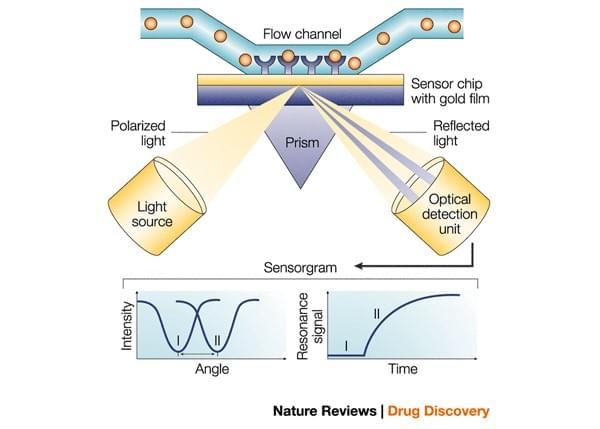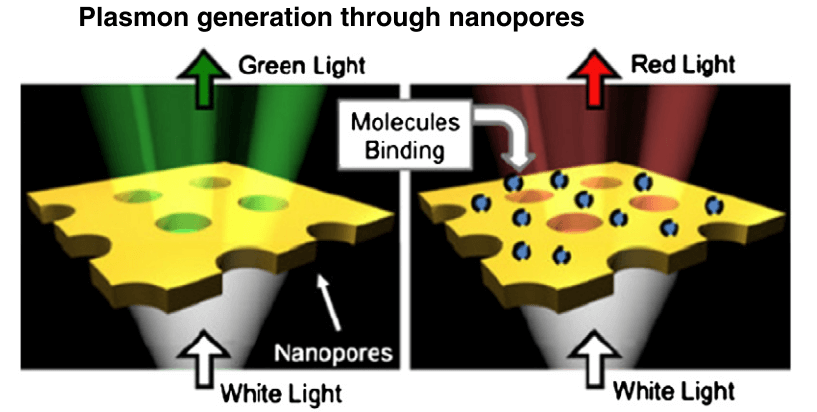Surface Plasmon Resonance (SPR)
Creative Biostructure can provide rapid, sensitive and reliable assays using MagHelix™ SPR for applications such as affinity measurement, pharmacokinetics (PK), toxicokinetics (TK), immunogenicity, biological potency testing (batch release and stability testing), drug screening, etc. We have rich experiences with SPR and serve many customers in the pharmaceutical industry at design and subsequent phases. We can help you with application optimization for many different projects.
Our MagHelix™ SPR is a powerful optional detection platform and can obtain label-free quality data in real-time to monitor biomolecular interactions. Biacore and Fortebio systems are two most widely used tools based on SPR technology to monitor biomolecular interactions (e.g., antigen-antibody affinity, protein-small molecule, protein-peptide and protein-protein).
 Figure
1.The changes in the refractive index in the immediate vicinity of the surface layer of a sensor chip can be detected by SPR.
Figure
1.The changes in the refractive index in the immediate vicinity of the surface layer of a sensor chip can be detected by SPR.
Theoretically, SPR uses an optical method to detect a change in refractive index of the medium. Biacore technology is predominantly developed and performed. As shown in the figure, the surface of the basic instrument is a sensor chip which is a thin film of gold on a glass support. The flow channel allows an aqueous solution to pass continuously. In an experiment to detect the binding of molecules, the receptor molecule is usually immobilised on the sensor surface and the analyte molecules are place into the flow channel. Light source launches the polarised light that directs to the under surface of the gold film and there are surface plasmons generated at a critical angle. When analyte molecules bind to the surface, the critical angle that is dependent on the refractive index will change. Finally, through a SPR experiment, a sensorgram is obtained.
 Figure 2: Next-generation SPR instrumentation (Biochim Biophys Acta. 2014)
Figure 2: Next-generation SPR instrumentation (Biochim Biophys Acta. 2014)
Now the widely used SPR technologies, such as Biacore technology, use a prism to focus the light, the next-generation SPR instruments are also developed which use a surface based on nano-structured materials (Figure 2). The next-generation SPR instrument is based on the phenomenon of EOT (extraordinary optical transmission) in which light transmit through nanoholes in thin metal films is of higher intensity than the incident light. The sensing capability of new approach is much greater than that of conventional APR instruments because there are numerous nanopores can be patterned in to the metal film. Moreover, above the nanopores, a lipid bilayer can be suspended and contains a membrane protein if interest, which permit SPR to analyze the ligand binding to membrane proteins in a more native environment. This kind of approach has been proved. SPR technology combined with fragment-based screening method has been successfully used in the medium-throughput screening of chemical libraries.
Our MagHelix™ analytical methods for biophysical characterization of biomolecules include but are not limited to:
- Protein Thermal Shift Assay
- Surface Plasmon Resonance
- Isothermal Titration Calorimetry
- Differential Scanning Calorimetry
- Saturation-Transfer Difference
- Bio-Layer Interferometry (BLI) Technology
Cooper MA. Optional biosensors in drug discovery. Nature Review Drug Discovery. 2002 Jul; 1 (7): 515-28.
Simon G. Patching. Surface plasmon resonance spectroscopy for characterisation of membrane protein–ligand interactions and its potential for drug discovery.
Biochim Biophys Acta. 2014 Jan;1838(1 Pt A):43-55.
Ordering Process
